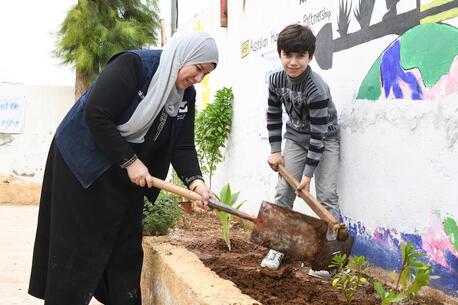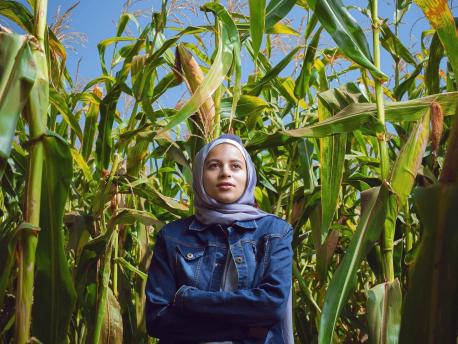
The Green Rising: Mobilizing Youth to Drive Climate Action
Young people are determined to do something about climate change. UNICEF intends to help them succeed — and spark a global movement. A look at some promising youth-led projects already underway.
With the launch of The Green Rising, UNICEF and partners have put an ambitious plan in motion: to mobilize 10 million young people to take concrete climate actions in their communities and countries by 2025.
The idea is to help activate and support youth-led climate action on a number of fronts, from community volunteerism to advocacy to skills development, jobs and entrepreneurship.
Empowering youth with education, skills and opportunities to be champions for the planet
There are several youth-led efforts already underway, in countries where UNICEF works all around the world, from Burundi to Kyrgyztan, Mongolia to the Maldives. Through The Green Rising initiative, UNICEF will essentially be stepping up efforts to help other youth in all corners of the globe get their projects off the ground, leveraging its extensive partner network and expertise in core issue areas like water, nutrition and education.
The initiative will focus on accelerating, scaling and measuring actions that young people are taking, leaning into existing youth networks and climate action initiatives — in partnership with UNICEF country offices and partners from all sectors — in a sprint leading up to COP28. "The Green Rising commits to contribute to a just green transition in which the most vulnerable youth are empowered with the education, skills and opportunities to be champions for the planet," the launch report states.
The goal: to spark a global, grassroots movement
Helping to propel the movement forward is the idea that young people have the power to influence society at all levels — from the local school district all the way up to high-level conferences. “We need young people in the rooms where decisions about our planet are being made, because young people are not only on the front line of the climate crisis, but we are also on the front lines of the fight for climate justice,” UNICEF Goodwill Ambassador Vanessa Nakate said in a video address.
In sparking a global, grassroots movement around climate action, stakeholders hope policymakers and business leaders will follow suit.
The Green Rising was announced in May by Generation Unlimited — a global public-private-youth partnership created by the UN General Assembly and anchored in UNICEF — following a high-level meeting that focused on building cross-sector coalitions, generating investments and ramping up youth-led climate action.
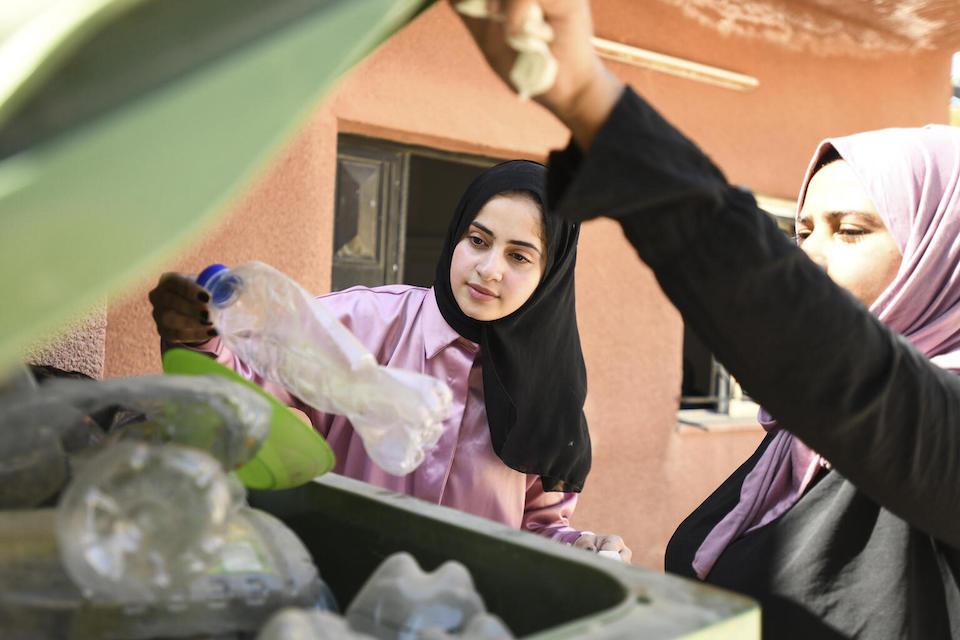
Engaging youth to drive climate action is a UNICEF priority
UNICEF has long prioritized youth engagement around climate issues, providing platforms for youth to share their ideas and to advocate for global action. Through direct interactions with youth across the globe, UNICEF has found that young people are eager to:
- lead projects that build climate resilience at local schools, hospitals, community centers and neighborhoods
- get trained in green skills and drive the green transition across sectors
- protect ecosystems by preserving water sources and forests, using cleaner energy and turning waste into energy
- work in their local communities to help them adapt and prepare for future climate events — using gender-transformative approaches
- adopt sustainable lifestyles and advocate — offline and online — for others to do the same
- advocate to governments and corporates to enact policies, adopt sustainable practices and fund climate adaptation measures
What youth climate action looks like
Kids in Burkina Faso are learning how to install solar panels. In Lebanon, they are setting up systems to turn biowaste into fuel. From Cambodia to Kazakhstan, they are taking aim at single-use plastics. These are just some examples of how young people are already taking action in their communities.
Here are a few more examples of what youth climate action looks like.
Preventing deforestation in Burundi
Around 1,000 young people are building clean energy stoves to reduce the amount of wood needed for cooking, which helps save the trees and forests and reduces local air pollution. Participants have since been inspired to get involved in other development projects, looking for more ways they can take action to protect their communities from the impacts of climate change.
Through the Green Girls initiative, teenage girls and young women are learning to source and manufacture a cheaper, more environmentally friendly type of charcoal made of plant materials — another solution to deforestation that also creates opportunities for the young women to start their own businesses.
Conserving water in India
A growing network of youth volunteers are being trained in water conservation practices in Maharashtra and Karnataka — states that have been declared perennially water-stressed. Skilled tasks include fixing leaky taps and encouraging people to use less water while brushing their teeth, bathing and doing laundry. The network is projected to be 1.1 million strong by 2025, reaching 4.4 million community members and saving up to 40 billion liters of water.
Making schools safer from extreme weather in Kyrgyzstan
Nearly 1,000 young people in the Central Asian country have already been trained in Disaster Risk Reduction. Now they are going from school to school in their home villages to train others — both students and teachers — on what to do in case of a weather emergency, and to verify the proper tools are in place.
For example, these young inspector-trainers check that dispatch telephone numbers are displayed on the walls, and that emergency exits are marked and doors unlocked; that evacuation instructions are posted prominently; and that each school has a fire shield, water tank and other emergency gear.
In the three years since launch, the young volunteers have covered almost half of all schools in Kyrgyzstan, training over 150,000 students and 10,000 teachers and administrators.
Creating a shared knowledge base in Malaysia
Youth-led environmental groups in Malaysia are collecting local and indigenous knowledge on how to protect the environment, then using that knowledge to develop programs responding to evolving community needs. A plan is in motion to upload the learnings to a shared resource hub for other young people to use and adapt to their own community-based climate activities.
Coral reef restoration in the Maldives
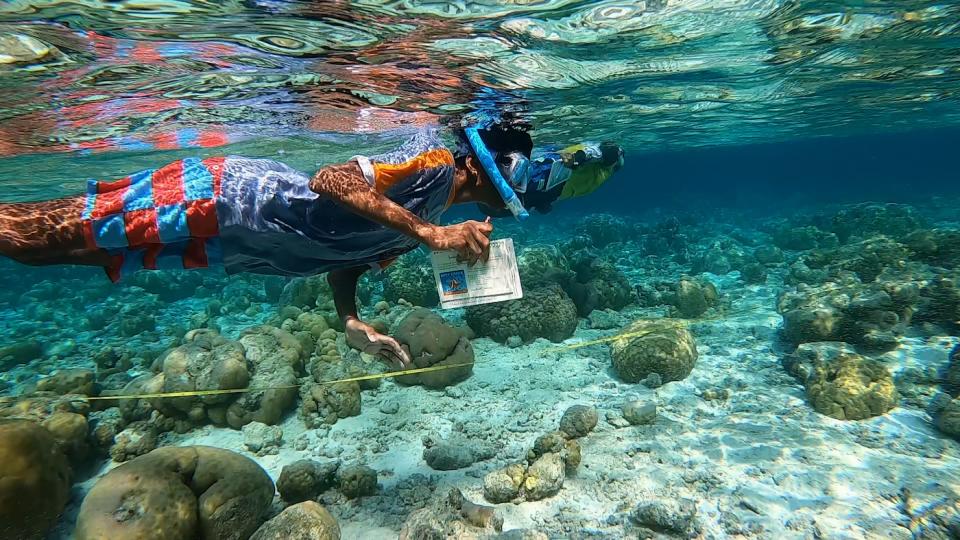
Since 2019, a group of teenage boys and girls known as the Muhyiddin Scouts have been working to address coral bleaching, an effect of rising ocean temperatures. Every week, the group snorkels offshore to chart progress of their efforts to nurture diseased corals back to health. Says Maeed Zahir, climate consultant for UNICEF Maldives: "By empowering and granting agency to the younger generation, we foster their capacity to address these pressing issues, strive for effective climate adaptation and build climate resilience."
Tackling air pollution in Mongolia
Air pollution is a big problem in Ulaanbaatar and other major cities in Mongolia. Young volunteers are using monitoring devices to capture and measure air pollution levels, then use the data to run awareness and advocacy campaigns in their communities — alerting people when air toxicity levels are especially high, identifying areas most at risk and providing communities with information on cleaner alternatives for heating their homes.
Translating eco-optimism into eco-activism
All of these youth-driven efforts are just the start. The premise of The Green Rising is that so much more is possible.
UNICEF USA conducted a 15-country survey on eco-anxiety to better understand how young people feel about climate change, what they want, where they get their information — and who they trust. While more than half of those surveyed reported feeling eco-anxious, nearly two-thirds said they were "eco-optimistic" or "eco-realistic" — yet just 16 percent identified as eco-activists.
The Green Rising initiative seeks to narrow that gap, with UNICEF playing a key role in helping young people find their voice and connect to platforms for meaningful engagement in climate efforts.
The Green Rising's theory of change: from climate action and advocacy to improved environmental outcomes
When young people from marginalized backgrounds have opportunities to lead climate action and advocacy, improved environmental outcomes emerge.
The first step is to enable effective and coordinated collective action to take place toward adapting to the climate crisis at a grassroots level. This inspires others to follow and change their own behavior — which can then catalyze larger systemic and cultural changes. This, in turn, challenges governments and private sector leaders to respond with clear action and resources.
As a result, more kids develop green and transferable skills that will benefit them throughout their lives. This generates support for further resilience-building initiatives toward protecting ecosystems, preserving water sources and forests, using cleaner energies, turning waste into energy — all the things that help protect communities against future climate events.
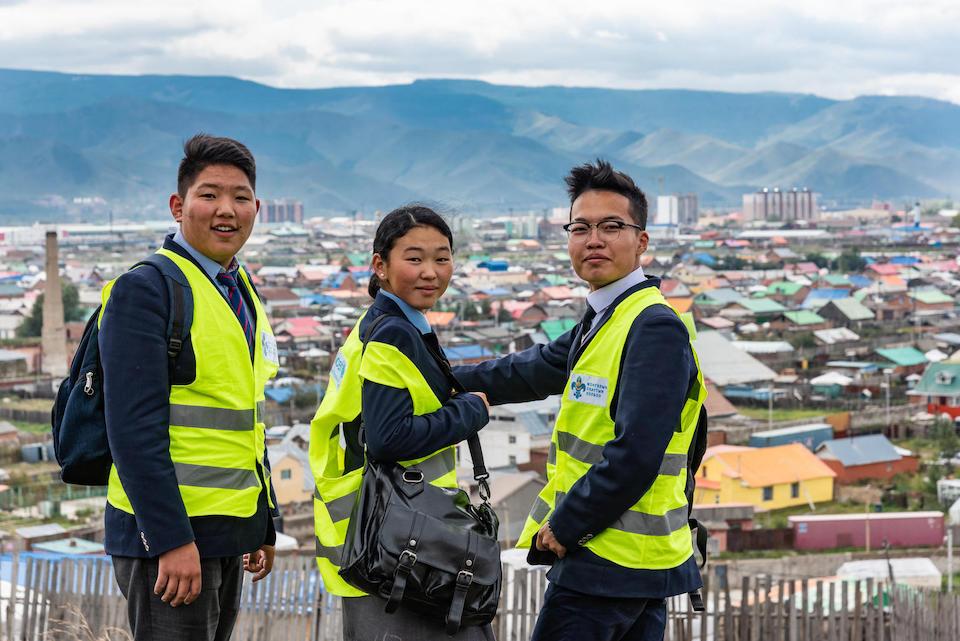
Leveraging COP28 to introduce an inclusive and borderless platform for action
Later this year, UNICEF and its coalition of partners behind The Green Rising plan to leverage COP28— the 28th annual Conference of the Parties of the United Nations Framework Convention on Climate Change — as an opportunity to present the initiative as an inclusive and borderless platform for action.
At COP28, organizers plan to showcase examples of young people taking effective action to protect their communities from climate change, while issuing a global invitation to other youth to join the movement — and a challenge to governments and corporate leaders to follow them.
Questions about The Green Rising? Email: Nadi Albino, nalbino@unicef.org or Priya Marwah, pmarwah@unicef.org
Learn more about how UNICEF is responding to the climate emergency. Support UNICEF. Donate today.

